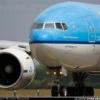
-
Content Count
1,308 -
Donations
$0.00 -
Joined
-
Last visited
Community Reputation
1,012 ExcellentAbout G550flyer
-
Rank
Member - 1,000+
Profile Information
-
Gender
Male
Flight Sim Profile
-
Commercial Member
No
-
Online Flight Organization Membership
IVAO
-
Virtual Airlines
Yes
Recent Profile Visitors
6,592 profile views
-
I definitely hear ya. I've just gotten so accustomed to it being a tool. It's always in standby unless I'm departing into storms or picking through them. The fun is in building the big picture with the RADAR, looking at the winds and judging how many miles left or right to you need request to steer clear. I do long for the day when storms are actually dangerous and you have the ability to request ATC for deviations. That will be so cool. Especially at night or in the clouds when you can't see the cells and really have to rely on your RADAR skills to stay clear.
-
Well, the weather RADAR is nice I guess🤔. But until there is weather within the sim that forces me to rely on the RADAR as I do in real life, I'm not sure how necessary it is right now.
-

Managing Takeoffs Fenix A320 CFM vs. IAE Engines
G550flyer replied to zachlog's topic in Microsoft Flight Simulator (2020)
Reminds me of flexing in the Gulfstream. Before you flex, you better make sure you are still making the min climb gradients and not exceeding runway available lol. Run your scenario again and see what it does at full rated takeoff thrust. Take notes on lift off point and climb rate after lift off. This is interesting. -

Managing Takeoffs Fenix A320 CFM vs. IAE Engines
G550flyer replied to zachlog's topic in Microsoft Flight Simulator (2020)
This, when flying per the procedures, leads me to believe that there may be some issues in performance calculations for flaps 3. As I mentioned in an earlier post, aircraft performance will follow a curve in regard to flap settings. Another part of the curve that I didn't mention is the accel go portion of certification requirements. There is part for accel stop too😝. For example, FAA certified aircraft will be at 35FT at the end of the accel go distance. All depends on the certification requirements. What this means is that regardless of the flap setting used, the aircraft has to meet no less than that requirement ENGINE OUT. Now in a sense, for the same weight, flaps 3 should easily meet that requirement because more flaps get you off the ground quicker/easier. But regardless, if a higher weight is calculated for flaps 3, it still has to be no less than certified height by the end of it's respective accel go/balanced field length engine out. Based on my experience, if I am rotating in the last 500FT and I am not engine out, something is wrong. You do have the responsibility of ensuring you are not runway limited for a specific weight, but I'm unsure of what the EFB is doing in the back ground. At least in the real world, you are comparing runway limiting weight wet/dry and climb requirement weight to calculate the optimum/max weight. If your actual weight is less than those, you can flex to a point. These days, computers will spit that out in seconds once the conditions are entered. -

Managing Takeoffs Fenix A320 CFM vs. IAE Engines
G550flyer replied to zachlog's topic in Microsoft Flight Simulator (2020)
I'm not sure about the EFB calculations, but from a real world aircraft performance stand point, I will say this. Aircraft takeoff performance and configurations follow a curve so to speak. There are two items that will impact this. Runway available and required climb gradients. These two items may drive where you will fall in that curve. Some manufacturers allow you to take full advantage of the curve and some allow you to take certain sections of the curve. For example, the DC10 and G550 that I have experience with. The DC10 took full advantage of the curve allowing 200 flap configurations from 5 to 25. The compromise between runway available/conditions and climb gradients will lead to the optimum flap setting/max weight for that takeoff. In the G550, you only have 10 and 20 for takeoff. You get two stabs at the curve, but that jet can takeoff at max weight on 5000FT of dry runway, so do you need the full optimized solution? no. 10 for high climb requirements and 20 for short runways. On the typical curve, the front end usually gives you good climb performance because of less flap drag, but may limit weight capability. The middle of the curve will give you a good compromise of climb and weight capability if it's possible. The aft end of the curve will get you off the runway quicker with all of the flaps, but again, may limit your weight and hurt your climb because of the drag. Now, in regard to the Airbus, flaps 1, 2 and 3 fall on the curve and will be based on conditions in an optimized solution. What I'm saying is that flaps 3 should not "kill" you or cause issues because it's on the performance curve. With flaps 3, the calculated Vr, Vmu and V2 should work. Yes, you will have more drag and less climb capability than 1 or 2 for a given weight and power setting. But, the aircraft won't fall out of the sky and get into stick shaker because of flap 3. Flaps 1, 2 and 3 should all have the same percentage of Vstall, which creates the curve. -
Yes. Every jet I flew didn't really have issues with it. In the DC10, the engines are below the wing, but you had a lot of engine clearance. I never flown airbus FBW aircraft, so it can be quirky. I once had this guy in the C-141B try the old rudder kick during some strong crosswind touch and goes. He said, hey, I'm going to use the ole decrab on this one. I don't know what he did on the controls, as I wasn't following him on the controls like you would a student. When he touched down, he still had a little crab in and the aircraft whipped sharply left and my Davy Clark's ended up twisted right and off my ears. I remember whispering into the hot mic "somethings off". He stated, enough of that and went back to the wing low method🤣. The 141 was a 4 engine heavy, but flew just like a Cessna with that nose down attitude on approach.
-

Landing Rate of Descent disparity
G550flyer replied to SquadronLeader's topic in Microsoft Flight Simulator (2020)
I wouldn't worry about those rates unless you are consistently exceeding touch down limits for the aircraft😋. -
In general as others have said, you don't normally need it inflight. As you turn, roll spoilers and yaw damp systems kick in. For approach and landing, there has always been two methods used(rudder kick and wing low). Main point is to have the nose pointed and aligned down the runway at touch down. I personally feel that peeps will use the method that suits them. Take me for example, I like to warm my hands up and have my crosswind controls locked in by 300 feet AGL. I prefer not to try to figure out my flare and crosswind controls all at the same moment. There are some limitations with the wing low and they are engine pods. Take an aircraft like the KC-135R. The aircraft has been modified with bigger engines and now they are close to the ground. This will decrease your bank limit at touch down. In a strong crosswind, it may be better to rudder kick in the flare. In all, land as you wish. I remember when I was flying KC-10s, you would come a cross a person every blue moon who uses the rudder kick method. 10 times out of 10, they would be a former KC-135R pilot.
-
Anyone using it yet? 😁
-
Very nice!!!
-
Perfect, I thought it was the case since I see that you are active in the beta forums😁
-
Yes, seems you have set properly, but don't forget to set the MSFS UI traffic setting to off. When you load to an airport, it and the skies should be empty if you have turned it all off. Ground aircraft and traffic all off. FSHUD should only have external selected. Now, when you load FSLTL while FSHUD is already running, you should only get FSLTL models. Also, make sure you configure these items when FSLTL asks if you want to configure by answering Y. By the way, FSHUD is still not perfect at the moment, but they are working through some issues. If you configure as discussed, those issues should be minimized, but will still happen based on the traffic load you have. I don't see that issue often, just make sure only external is selected and MSFS traffic is off so that the built ATC is not running traffic on you. Disable blank liveries ('Yes' / 'No') (current Yes): Disable generic models ('Yes' / 'No') (current Yes): Prioritise Just Flight FS Traffic models ('Yes' / 'No') (current No): Then, you should only see FSLTL models.
-
I think you are miss understanding, at least from my perspective. When properly configured, FSHUD controls everything. This is why FSHUD gives you a major performance hit when there is a lot of traffic because it is calculating and control each injected traffic. The ideal configuration for full control is to turn traffic off in MSFS settings. This keeps the sim from putting in any uncontrolled traffic. You then set FSHUD to utilize external injectors. Through the API, FSHUD will control/manage what's being injected. It's not looking at a database and injecting the traffic, it is controlling what the external injector is doing. This is why FSLTL will wait for FSHUD to load a flight and hand off it's injections to it. FSHUD has performance hitting settings in it, but FSLTL gives more fidelity on what, when and where other items can be loaded such as populating airports or airspace on a non interference bases. This configuration gives FSHUD the ability to stop traffic taxiing in your way or vice versa by stopping you. If there is a unsolvable conflict, FSHUD deletes the traffic. It also minimizes go arounds because it's managing the traffic. It's actually the big advantage FSHUD has over others until beyond ATC comes online looking to control traffic as well. In simple thoughts, when configured properly, injectors create traffic and hand them off to FSHUD for management through API.
-
So, FSLTL is an injector itself with built in models. It will place traffic where it should be at your departure, arrival and enroute. It also has configurable settings. Even if you ran FSLTL without FSHUD, it will place the traffic. FSHUD is an ATC program. It will give you it's own ATC for your flights and will control AI aircraft regardless from where they are injected. FSHUD can be configured to use MSFS's models/traffic or an external program such as FSLTL. The best way to run the two is to set FSHUD to user external(FSLTL), turn the MSFS internal live traffic and models off and configure FSLTL to a setting that your computer can handle. There is a good video on the FSLTL site for configuring FSLTL with best traffic and minimal impact. You will now have to start FSHUD first and then FSLTL. FSLTL will see FSHUD and interrogate the settings/loaded flight and load in the traffic. I use them both myself and it works perfectly. But yes, you will have to run them both.








